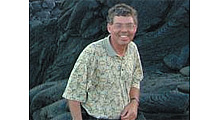CTIA Proposes Using 2 GHz BAS Spectrum for Broadband

Doug Lung
I suppose it was bound to happen. For small urban cell sites 2 GHz is more useful than 600 MHz and broadcasters have 85 MHz of prime real estate (down from 120 MHz before reallocation to AWS and MSS) between 2025 and 2110 MHz. Worse, use of this spectrum is intermittent, peaking during large news events and when local TV stations are in news programming, which might give some the impression it isn't being used.
In a letter to FCC Chairman Julius Genachowski and the commissioners, CTIA, “The Wireless Association,” presented its solution for identification of 15 MHz of contiguous spectrum for mobile broadband as part of the implementation of the Middle Class Tax Relief and Job Creation Act of 2012, part of which is referred to as the “Spectrum Act” as it authorized the incentive auction of UHF TV spectrum and relocation/sharing of federal government spectrum.
The attachment to the letter dated March 13, states:
“CTIA believes that the commission should closely consider spectrum from the Broadcast Auxiliary Service as a most effective candidate band. This spectrum band is below 3 GHz, contiguous and adjacent to current allocations, and would allow pairing in a readily achievable fashion. CTIA is not aware of any other spectrum bands as well-positioned as this band to meet all the key principles for mobile broadband spectrum that could be paired with the specific 15 MHz identified by NTIA, and that could be put to timely use and generate significant revenues through a competitive bidding process.”
CTIA sees the 2 GHz BAS spectrum between 2095 and 2110 MHz becoming available for auction in August 2014 with licenses granted by Feb. 22, 2015, in time to meet the deadlines in the Spectrum Act. CTIA notes that Ericsson proposed pairing the 1675-1710 MHz and 2075-2110 MHz bands in 2011.
CTIA acknowledges BAS use of the band, along with the federal space operations service, earth exploration service, and space research service that share the 2 GHz BAS band. However, CTIA said NTIA can move out of this band or, if not, the existing federal locations where the band is used can be protected.
Nowhere in the letter or the 14-page attachment did I see any mention of what would happen to broadcasters who currently use the 15 MHz of spectrum that would be eliminated from the band. As the 2 GHz BAS band is divided into seven 12 MHz-wide channels, with 500 kHz at each end for digital links, a new 2 GHz band plan would be required with narrower channels. I've heard complaints that seven 2 GHz channels aren’t sufficient for major markets, so reducing the number of channels isn't an option. How difficult would it be to modify all the radios in news vans and all the receive sites to handle the new channel plan and reduced bandwidth? Who would pay for this?
Auction revenues, I suppose.
In March 2012 NTIA Makes Spectrum Exchange Offer Involving 2 GHz BAS Band, I said:
“It seems like a spectrum shell game to me, with broadcasters and existing 2 GHz users coming out the losers,” and I asked, “Could it be that NTIA DOD 1.8 GHz spectrum is more valuable than directly auctioning the 2 GHz BAS spectrum which, as broadcasters are learning, sits right in the middle of existing wireless broadband allocations (AWS, MSS, etc.)? I doubt it, which is why the plan, in spite of the hoopla about found spectrum for wireless broadband, makes no sense to me unless the real agenda is to clear broadcasters from the 2 GHz ENG band. Perhaps they assume TV newsgathering won't exist in 10 years.”
Get the TV Tech Newsletter
The professional video industry's #1 source for news, trends and product and tech information. Sign up below.

Doug Lung is one of America's foremost authorities on broadcast RF technology. As vice president of Broadcast Technology for NBCUniversal Local, H. Douglas Lung leads NBC and Telemundo-owned stations’ RF and transmission affairs, including microwave, radars, satellite uplinks, and FCC technical filings. Beginning his career in 1976 at KSCI in Los Angeles, Lung has nearly 50 years of experience in broadcast television engineering. Beginning in 1985, he led the engineering department for what was to become the Telemundo network and station group, assisting in the design, construction and installation of the company’s broadcast and cable facilities. Other projects include work on the launch of Hawaii’s first UHF TV station, the rollout and testing of the ATSC mobile-handheld standard, and software development related to the incentive auction TV spectrum repack. A longtime columnist for TV Technology, Doug is also a regular contributor to IEEE Broadcast Technology. He is the recipient of the 2023 NAB Television Engineering Award. He also received a Tech Leadership Award from TV Tech publisher Future plc in 2021 and is a member of the IEEE Broadcast Technology Society and the Society of Broadcast Engineers.
